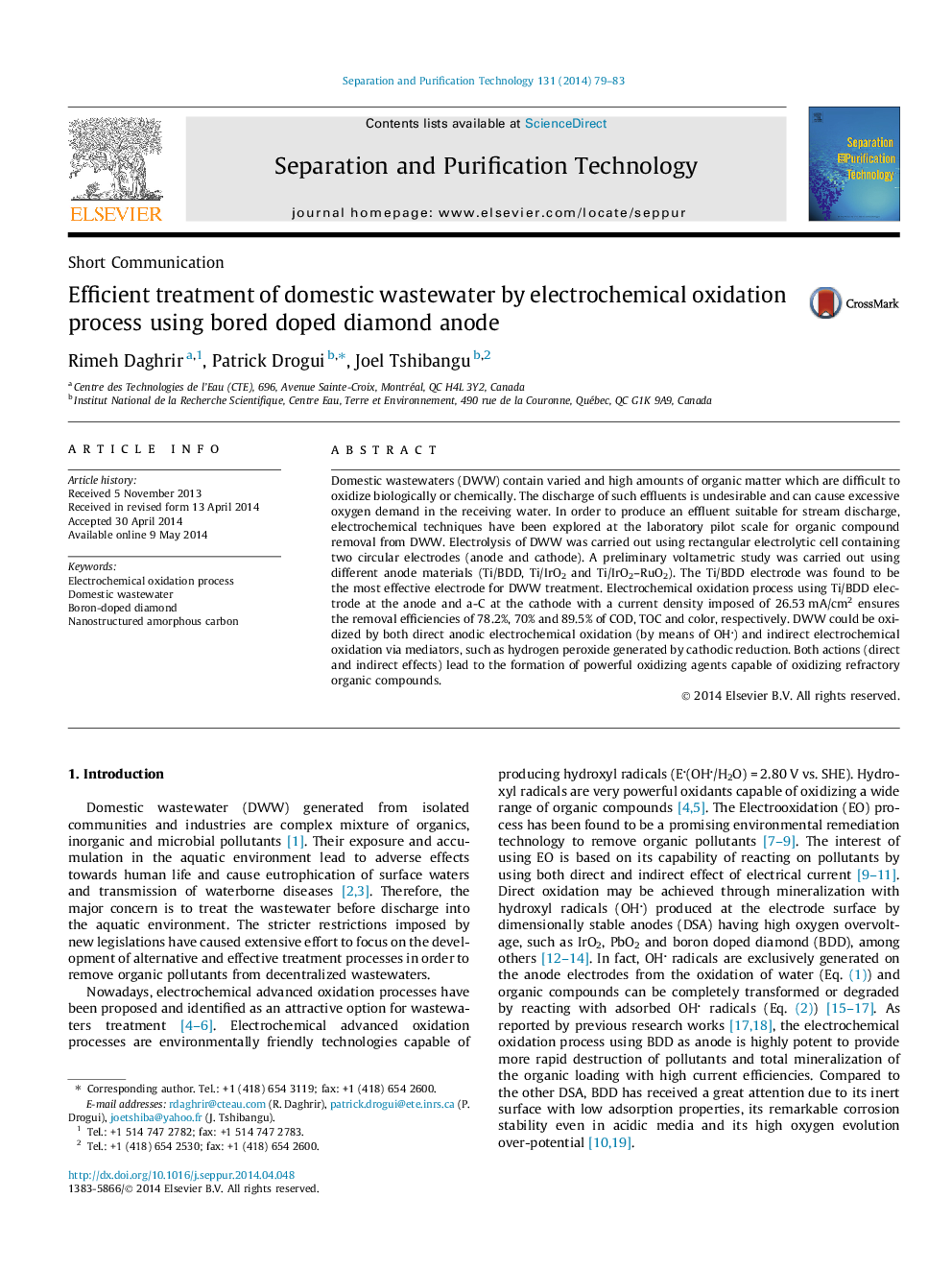| Article ID | Journal | Published Year | Pages | File Type |
|---|---|---|---|---|
| 641140 | Separation and Purification Technology | 2014 | 5 Pages |
•Current density and type of anode greatly affect the EO treatment of DWW.•The Ti/BDD operated at 26.53 mA/cm2 is effective electrode for DWW treatment.•The EO process is able to remove of 78.9 ± 2% of COD and 89.5 ± 2% of color.•The EO process ensures the removal 70% of TOC from DWW.
Domestic wastewaters (DWW) contain varied and high amounts of organic matter which are difficult to oxidize biologically or chemically. The discharge of such effluents is undesirable and can cause excessive oxygen demand in the receiving water. In order to produce an effluent suitable for stream discharge, electrochemical techniques have been explored at the laboratory pilot scale for organic compound removal from DWW. Electrolysis of DWW was carried out using rectangular electrolytic cell containing two circular electrodes (anode and cathode). A preliminary voltametric study was carried out using different anode materials (Ti/BDD, Ti/IrO2 and Ti/IrO2–RuO2). The Ti/BDD electrode was found to be the most effective electrode for DWW treatment. Electrochemical oxidation process using Ti/BDD electrode at the anode and a-C at the cathode with a current density imposed of 26.53 mA/cm2 ensures the removal efficiencies of 78.2%, 70% and 89.5% of COD, TOC and color, respectively. DWW could be oxidized by both direct anodic electrochemical oxidation (by means of OH) and indirect electrochemical oxidation via mediators, such as hydrogen peroxide generated by cathodic reduction. Both actions (direct and indirect effects) lead to the formation of powerful oxidizing agents capable of oxidizing refractory organic compounds.
